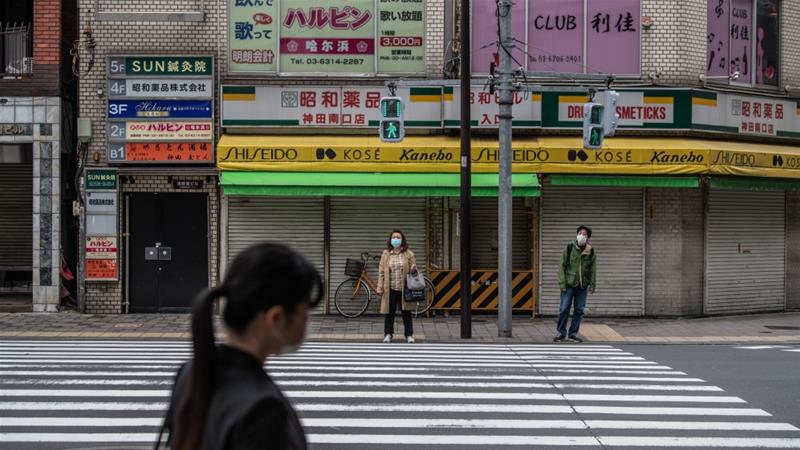The darkening outlook in the world’s third-largest economy is already heightening calls for bigger spending, even after parliament approved an extra budget to fund a $1.1 trillion stimulus package to cushion the blow from the pandemic.
“The government will work with the central bank to ensure Japan absolutely does not slip back into deflation,” Economy Minister Yasutoshi Nishimura told a news conference on Friday.
Core consumer prices in Tokyo, a leading indicator of nationwide inflation trends, slipped 0.1 percent in April from a year earlier, government data showed, dashing expectations for a 0.1 percent rise and following a 0.4 percent increase in March.
It was the first year-on-year decline since April 2017.
Read Also: Japanese Emperor Naruhito Marks First Anniversary
While the drop was largely due to slumping energy costs following the collapse in the crude oil price, it has consolidated expectations that Japan will see consumer prices fall in coming months as the economy feels a sharper hit from the pandemic.
Japan’s factory activity shrank faster than initially estimated in April, a manufacturing survey showed on Friday, with declines in product orders and output accelerating.
The final au Jibun Bank Japan Manufacturing Purchasing Managers’ Index (PMI) fell to a seasonally adjusted 41.9 from a final 44.8 in March, its lowest since April 2009, and showing a steeper contraction than the 43.7 seen in a preliminary reading last week.
The survey showed both output and new orders contracted at the fastest pace since early 2009, as the pandemic knocked overseas and domestic demand, setting off orders cancellations and factory closures.
“Japan’s manufacturing downturn deepened in April as international supply chain paralysis intensified and global demand sank further,” said Joe Hayes, an economist at IHS Markit, which compiled the survey.
“Factory shutdowns and below-capacity operations overseas are having a cascading effect on Japanese goods producers, who in turn are cutting or completely suspending production due to closures at their clients and suppliers.”
Employment conditions at manufacturers worsened for a second month during April, with the rate of decline accelerating to the fastest in more than 10 years.
They also reported the most negative outlook for output over the next 12 months since IHS Markit started tracking the future outlook in July 2012. Firms said they expect to adjust their production schedules over the coming year in response to falling demand.
IMF praise
Meanwhile, as Japan tries to boost its own economy, its significant contribution to the International Monetary Fund has drawn praise from the institution’s leader.
IMF managing director Kristalina Georgieva on Thursday lauded Japan’s plans to spend about 20 percent of its gross domestic product (GDP) to respond to the economic challenges of the coronavirus pandemic and help the world’s poorest countries, urging others to do their part.
Japan, the world’s third-largest economy behind the United States and China, was the largest contributor to IMF financial resources and the largest contributor to the fund’s concessional lending facilities, Georgieva said in a statement.
“While it has the clear intention to support the Japanese economy, Japan will also underpin the stability of the global economy through contributions to the International Monetary Fund’s resources for the provision of debt relief and concessional financing to low-income countries,” she said.
IMF and World Bank officials have repeatedly warned that the world’s poorest countries will be particularly hit hard by the pandemic because they lack the resources and infrastructure to respond to the resulting health and economic challenges.
“It is therefore crucial that the membership work together to support our poorest and most vulnerable members in this difficult period,” Georgieva said in the statement.
She said Japan had provided close to 9 billion in Special Drawing Rights (SDR), the IMF’s currency, to date to the Poverty Reduction and Growth Trust (PRGT), which amounted to 23 percent of all PRGT loans, and more than SDR 900 million in subsidy grant resources.
“I urge other member countries to contribute to both the CCRT [Catastrophe Containment and Relief Trust] and PRGT. By working together, we can overcome the global challenge facing us and help restore growth and prosperity,” she said.
SOURCE: REUTERS NEWS AGENCY

